While everyone—scientists, health practitioners, and all of us—can easily agree that quality moe (sleep) is one of the most important aspects of our wellbeing, moe is never operating in isolation. It’s a part of our wellbeing that works with—at least—our diet, activity and frame of mind to achieve optimal wellness. But many experts argue that any one area of our wellbeing cannot be separated from the other areas, and that’s what Te Whare Tapa Whā is all about. At BedsRus we found that our goal of helping all Kiwis achieve wellness with quality moe aligns well with this model, and we’d like to celebrate Māori Language week by taking a closer look at it.
So it’s time for a deep dive into Te Whare Tapa Whā - a holistic framework that uses a four-walled wharenui (meeting house) to represent health and wellbeing. What is it, how does it work, and where does moe come into it? Read on to find out!
Note: There are other Māori health models as well as Te Whare Tapa Whā. These include Te Wheke (the Octopus) and Te Pae Mahutonga (Southern Cross Star Constellation). All three models emphasise hauora (a holistic view of health and wellbeing) and represent these areas of wellbeing as interwoven.
What is Te Whare Tapa Whā?
In 1984, leading Māori health advocate and psychiatrist Sir Mason Durie developed Te Whare Tapa Whā, or “the four walls of wellbeing”, modelled on a wharenui or meeting house.
You might have heard of this concept before—either through whānau, tohunga hauora (health practitioners), or in the context of mental health.
The walls represent taha wairua (spiritual wellbeing), taha hinengaro (mental and emotional wellbeing), taha tinana (physical wellbeing) and taha whānau (family and social wellbeing).
Sir Durie’s theory is that when the four walls of the wharenui are in balance, we thrive. But when even one wall is off-balance, this can impact our wellbeing.

Image Source (Mental Health Foundation)
Of course, we’re keen to talk about moe in the context of Te Whare Tapa Whā—but since all of the walls are interconnected, we think we should first take a look at each wall in more detail.
Whenua: Your Land or Roots
It’s not a wall, but it is the whole foundation that the wharenui is built upon.
Whenua is about your sense of belonging in a place and the things that make you feel connected to it. It includes soil, rocks, plants, animals and people – the tangata whenua.
Because nature is alive with the same mauri (spiritual force) that exists in human beings, we need to care for and nurture it.
Caring for your whenua starts by simply noticing it: spending time outside looking at nature. You can add in more interaction with the land if that’s your thing: gardening, outdoor art or spending time with animals, for example.
You could also think of your whenua as the spaces where you feel most comfortable, and this could include your whare, being with your hoa (friends), or even your place of mahi.
Taha Hinengaro: Taking Care of Your Mental and Emotional Wellbeing
Taha Hinengaro is about your mind: how you feel, how you think, and how you communicate.
It might start with gratitude, and doing things that make you feel happy.
It’s also about noticing when things aren’t right and doing something about it. If your moods are off, or you’re feeling low or anxious and your usual strategies aren’t working, then it could be time to reach out for help from whānau, hoa (friends) or a professional.
In Aotearoa we also have a range of free resources and support for people experiencing mental or emotional distress - you can explore some of those here.
Taha Wairua: The Meaning in Your Life
Taha Wairua is also known as spiritual wellbeing, although this is often mistaken for something exclusively faith-based.
Religious practices and faith may come into it, but Taha Wairua is ultimately about your relationship with your environment, your connection with the past, present and future, and knowing yourself: what are your whanonga pono (core values)? How do you create meaning and purpose in your life?
There is no right or wrong way to think about Taha Wairua, so whether it’s grounded in faith, exploration of yourself as a human being or both doesn’t matter. What matters is that we give it attention and keep it in balance.
Taha Whānau: Your People and Community
Taha Whānau is about the people and relationships that make you feel that you belong. They may or may not be related to you: your whānau could consist of hoa, hoamahi (coworkers), team mates, people you care about, and other members of your community as well as direct relatives.
In Te Whare Tapa Whā, these relationships are linked to your role within the whānau (what you contribute) and the role of the whānau within you (it contributes to your identity and sense of belonging).
Taha Tinana: Taking Care of Your Body
Taha Tinana is about nurturing and protecting your physical body.
Eating wholesome food, drinking enough water, getting enough quality moe, and moving your body in a way that works for you are all key.
Also key is recognising when something isn’t right in your physical body: knowing when you need to see a dentist or tohunga hauora (health practitioner). Sometimes our tinana might be off in a way that we can’t control, but the important thing is that we do what we can to take care of it.
Where Does Moe Fit in with Te Whare Tapa Whā?
Te Whare Tapa Whā sheds light on the interconnectedness of our physical, mental, emotional, spiritual, and social needs. After exploring each wall of the wharenui, it’s clear that achieving optimal wellbeing requires balance and harmony across all four walls.
So: pop quiz on the wharenui! Which wall does moe (sleep) feature in the most?
If you said Taha Tinana, then you’re correct—although it would also fit in Taha Hinengaro as well, since a lack of quality moe can have a hugely detrimental effect on our mental and emotional wellbeing.
Moe is a good example of something that passes through more than one wall of the wharenui.
Achieving quality moe (particularly if there’s something underlying sleep difficulties) in itself requires a holistic approach. Many sleep services include a range of tohunga—dentists, ear nose and throat tohunga, moe tohunga, psychotherapists, dieticians, bariatric tohunga—the list goes on, but in it you can see how multi-pronged our approach to sleep needs to be.
During Māori Language Week at BedsRus, we’re not only celebrating the richness of the Māori language but also the profound wisdom of Māori health models like Te Whare Tapa Whā. By recognising the interconnectedness of our physical, mental, emotional, spiritual, and social dimensions, we can aim to keep things in balance.





